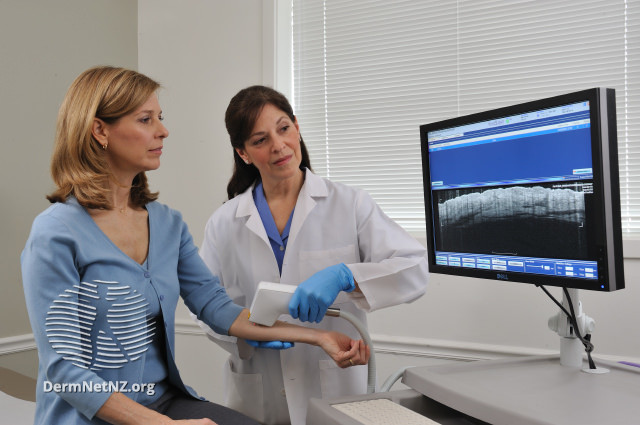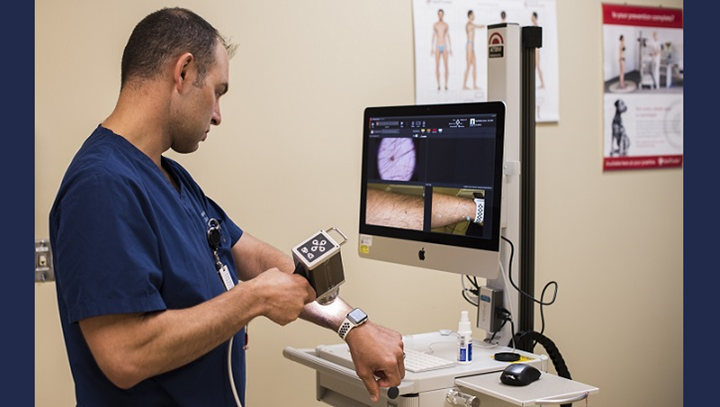This article is for informational purposes only and does not replace professional medical advice.
Over the past decade, Optical coherence tomography (OCT) has been increasingly used as a novel noninvasive imaging device to diagnose skin cancer. Its popularity is attributed to its ability to examine the skin in real time by providing a cross-sectional imaging of the skin. In comparison to older tools used by dermatologists such as the reflectance confocal microscopy, OCT has significantly better imaging depth of up to 2mm and a wider field of view albeit with a lower cellular resolution.
Various forms of OCT have since emerged such as Frequency domain OCT, dynamic OCT (D-OCT), and high-definition OCT (HD-OCT), all of which have been found to be efficacious in the diagnosis, treatment planning as well as monitoring of non-melanoma skin cancers.
With any diagnostic tool, continuous development and assessment is essential to examine the potential of the tool in clinical scenarios. To examine the diagnostic potential and accuracy of a tool, the most important factors are its sensitivity and specificity. However, the accuracy of the OCT is a subject of debate among dermatologists as many have expressed concern that screening with OCT alone as a diagnostic tool may lead to false negatives and delayed diagnosis of skin cancer. With this concern in mind, a research was conducted that examined the diagnostic accuracy of OCT to diagnose skin cancer.
The chief objective of this study was to estimate the diagnostic accuracy of OCT in basal cell carcinomas (BCC) and actinic keratosis (AK) as well as differentiating these lesions from normal skin.
Study Methodology
The study prepared a set of 142 OCT images that met the predetermined selection criteria for image quality as the diagnosis accuracy was heavily dependent on image quality. The OCT images for the study were all obtained by a widely used and commercially available OCT machine. The OCT images contained a mixture of cases with diagnosis of AK, BCC and normal skin.
These images were then presented simultaneously to two groups of blinded observers. One group comprised of 5 dermatologists who were experienced in OCT-image interpretation and diagnosis with a minimum of one-year experience in using OCT. The second group consisted of 5 dermatologists who were unfamiliar with OCT as a diagnostic tool. Each group of dermatologists were asked to answer a standardized questionnaire based on the OCT images and their presumed diagnosis.
Results of The Questionnaire
In the first group of dermatologists who were experienced with OCT, the diagnostic accuracy was found to be at a satisfactory level for Basal Cell Carcinoma with a sensitivity of 86% to 95% and a specificity of 81% to 98%. Unsurprisingly, the second group of dermatologists were not as adept at OCT as a diagnostic tool for BCC with the experienced dermatologists exhibiting an overall higher diagnostic accuracy in comparison to the OCT inexperienced dermatologists.
Proper OCT training is essential early on during residency years for dermatologists to be well versed with OCT, and only then can OCT be an effective screening asset for skin cancer.
References
Olsen J, Themstrup L, De Carvalho N, Mogensen M, Pellacani G, Jemec GB. Diagnostic accuracy of optical coherence tomography in actinic keratosis and basal cell carcinoma. Photodiagnosis Photodyn Ther. 2016 Dec;16:44-49. doi: 10.1016/j.pdpdt.2016.08.004. Epub 2016 Aug 9. PMID: 27519350. Feature image from DermNet, https://creativecommons.org/licenses/by-nc-nd/3.0/nz/legalcode,



